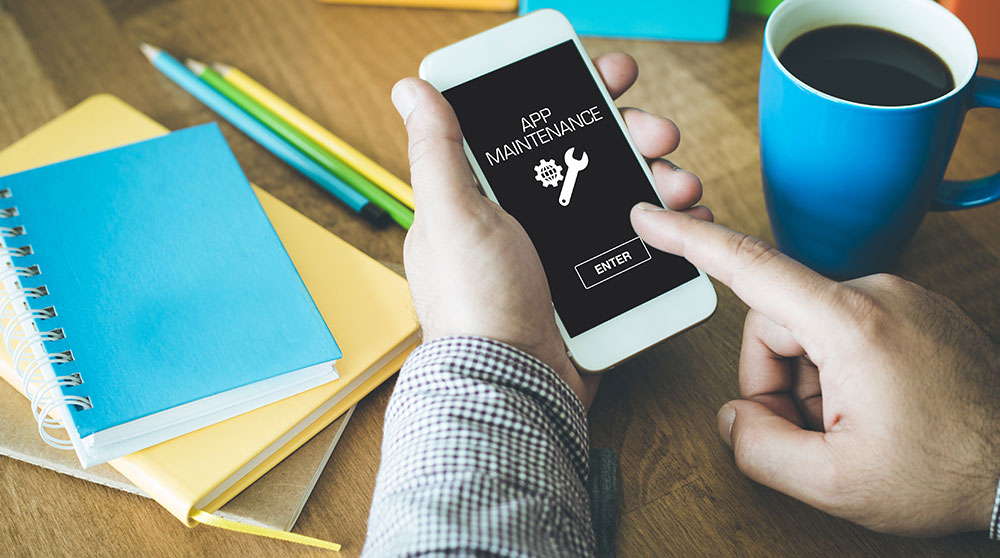Introduction:
Mobile apps have become an integral part of our lives, revolutionizing how we connect, work, and play. However, the journey to app success doesn't end with the initial launch. App maintenance is an ongoing necessity to ensure optimal performance, security, and user satisfaction. In this blog post, we will dive into the cost of mobile app maintenance and shed light on different types of maintenance, including emergency, corrective, preventive, adaptive, and perfective maintenance. So, fasten your seatbelts and get ready for an entertaining ride through the world of app maintenance.
Emergency Maintenance: The Hero in the Night
Picture this: your app crashes during peak usage hours, leaving your users frustrated and your reputation at stake. That's when emergency maintenance comes to the rescue. Whether dealing with server failures, security breaches, or major crashes, emergency maintenance promptly fixes critical issues. However, this heroic intervention often comes with a hefty price tag, reflecting the urgency and specialized skills required. To prevent frequent emergencies, investing in preventive measures is crucial.
Corrective Maintenance: Silencing the Gremlins
Bugs and glitches are the gremlins of the app world, wreaking havoc on user experience and functionality. Corrective maintenance involves identifying and fixing issues that emerge post-release. From pesky UI bugs to performance bottlenecks, this type of maintenance helps keep your app running smoothly. The cost of corrective maintenance varies based on the complexity of the problem and the resources needed for debugging. To minimize these costs, rigorous testing and quality assurance are key.
Preventive Maintenance: The Doctor's Prescription
Prevention is always better than cure. Preventive maintenance focuses on regular check-ups and fine-tuning to keep your app healthy and resilient. By monitoring performance, optimizing code, and conducting compatibility tests, preventive maintenance detects potential issues before they spiral out of control. This proactive approach saves you money in the long run by reducing emergency and corrective maintenance costs. It also improves user experience, ensuring your app remains a favorite.
Adaptive Maintenance: The Shape-Shifting App
In the rapidly evolving world of technology, your app needs to adapt to new operating systems, devices, and user expectations. Adaptive maintenance involves modifying your app to ensure compatibility, functionality, and usability across different platforms, screen sizes, and OS versions. This type of maintenance keeps your app relevant and accessible, expanding your user base. While the cost of adaptive maintenance varies, it's a worthy investment to stay ahead of the curve.
Perfective Maintenance: Fine-Tuning for Success
To stay competitive, your app must continuously evolve and improve. Perfective maintenance focuses on enhancing existing features, optimizing user interfaces, and fine-tuning performance. By analyzing user feedback, implementing UX/UI improvements, and introducing new functionalities, perfective maintenance enhances user satisfaction, boosts retention, and drives revenue. The cost of perfective maintenance is relatively lower than other types, making it a wise investment for long-term success.
Questions to Ponder:
- Have you ever experienced a mobile app failure that could have been prevented with proper maintenance?
- What preventive measures do you take to avoid app issues and crashes?
- How often do you analyze user feedback to make improvements to your app?
- Are you aware of the latest operating system updates and how they might affect your app's compatibility?
- Which type of app maintenance do you find the most challenging or costly? Why?
The cost of app maintenance:
Mobile app maintenance costs can vary significantly depending on various factors, including the complexity of the app, the size of the development team, the frequency of updates, and the types of maintenance required. Here, we will explore some cost considerations for mobile app maintenance:
Internal Team Costs:
If you have an in-house development team responsible for app maintenance, the cost will include salaries, benefits, and overhead expenses. This includes the salaries of developers, testers, designers, and project managers involved in maintaining and updating the app. Additionally, training costs to keep the team updated with the latest technologies and trends should be considered.
External Development Costs:
Many businesses choose to outsource app maintenance to external development agencies or freelancers. The cost will depend on the hourly rates of the developers and the scope of work involved. Rates can vary significantly based on location and expertise. It's important to consider the reputation, experience, and track record of the external development team to ensure quality and reliability.
Infrastructure Costs:
Maintenance may involve costs associated with infrastructure, such as servers, hosting, and cloud services. These costs will vary depending on the app's scale, user base, and resource requirements. Cloud-based services, for example, can provide scalability and cost efficiency, but it's essential to consider potential usage fees and data transfer costs.
Bug Fixing and Issue Resolution:
Corrective maintenance, which involves addressing bugs and issues, can contribute to the overall maintenance cost. The complexity and severity of the bugs and issues, as well as the time and effort required to fix them, will impact the cost. It's important to allocate resources for thorough testing and quality assurance to minimize the occurrence of such issues.
Regular Updates and Enhancements:
Mobile apps need regular updates to stay relevant, comply with platform guidelines, and incorporate user feedback. The cost of regular updates and enhancements, including feature additions, UI/UX improvements, and performance optimizations, should be factored into the maintenance budget. The frequency of updates and the extent of changes will influence the overall cost.
Security and Compliance:
Ensuring the security and compliance of your app is crucial for protecting user data and maintaining user trust. Security updates, vulnerability assessments, and compliance with data protection regulations may involve additional costs. Investing in robust security measures is essential to prevent potential breaches and mitigate the financial and reputational risks associated with security incidents.
It's important to note that while maintenance costs are necessary, they are an investment in the long-term success and profitability of your mobile app. Prioritizing app maintenance helps provide a seamless user experience, ensures app stability, minimizes downtime, and improves user retention.
Conclusion
Maintaining a mobile app goes beyond the initial development and launch. It requires ongoing investment to keep your app functioning flawlessly and meeting user expectations. By understanding the costs and benefits of different types of app maintenance—emergency, corrective, preventive, adaptive, and perfective—you can create a maintenance strategy that ensures your app's success.
Mobile app maintenance costs are influenced by various factors, including the type of maintenance required, internal or external development resources, bug-fixing efforts, regular updates, security measures, and compliance requirements. By carefully considering these factors and allocating resources accordingly, you can effectively manage app maintenance costs while delivering an exceptional user experience.
At Flynaut, we understand the challenges of app maintenance and offer tailored solutions to optimize your app's performance and user experience. Our expert team can help you navigate the maintenance landscape and keep your app ahead of the curve.
Contact Flynaut today to discuss your app maintenance needs and unlock the full potential of your mobile app.






























